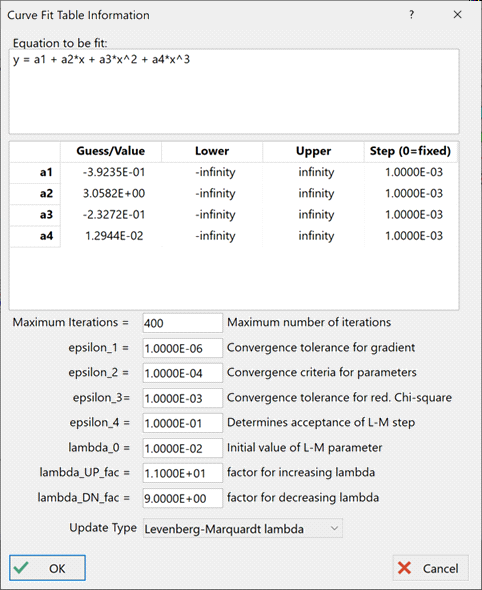
Curve Fit Table Information Dialog
The Curve Fit Table Information Dialog allows you to specify parameters used in the curve fitting process.

The equation to be fit with its unknown coefficients is shown in the Equation to be fit box at the top. The table lists each of the unknown coefficients and allows you to specify a guess value and limits for each one. The final column is the step size that the curve fit algorithm uses to adjust the parameter. If the step size is set to zero then the parameter is held constant. This is particularly useful if you are trying to fit one or a subset of coefficients at a time as it allows you to fix some coefficients and vary others. Then you can fix those and vary the ones that were fixed. This process often yields good results in stubborn problems.
The list of parameters apply to convergence tolerances and other numerical parameters, as described in:
Gavin, H.P.,
"The Levenberg-Marquardt algorithm for nonlinear least squares curve-fitting problems,"
Department of Civil and Environmental Engineering, Duke University,
November 27, 2022. (https://people.duke.edu/~hpgavin/ExperimentalSystems/lm.pdf)
The Update Type is another parameter that can be varied to improve convergence. It is sometimes the case that you will converge to a suboptimal set of coefficients using one Update Type but, starting from these results, it is possible to improve the fit by switching to a different Update Type.